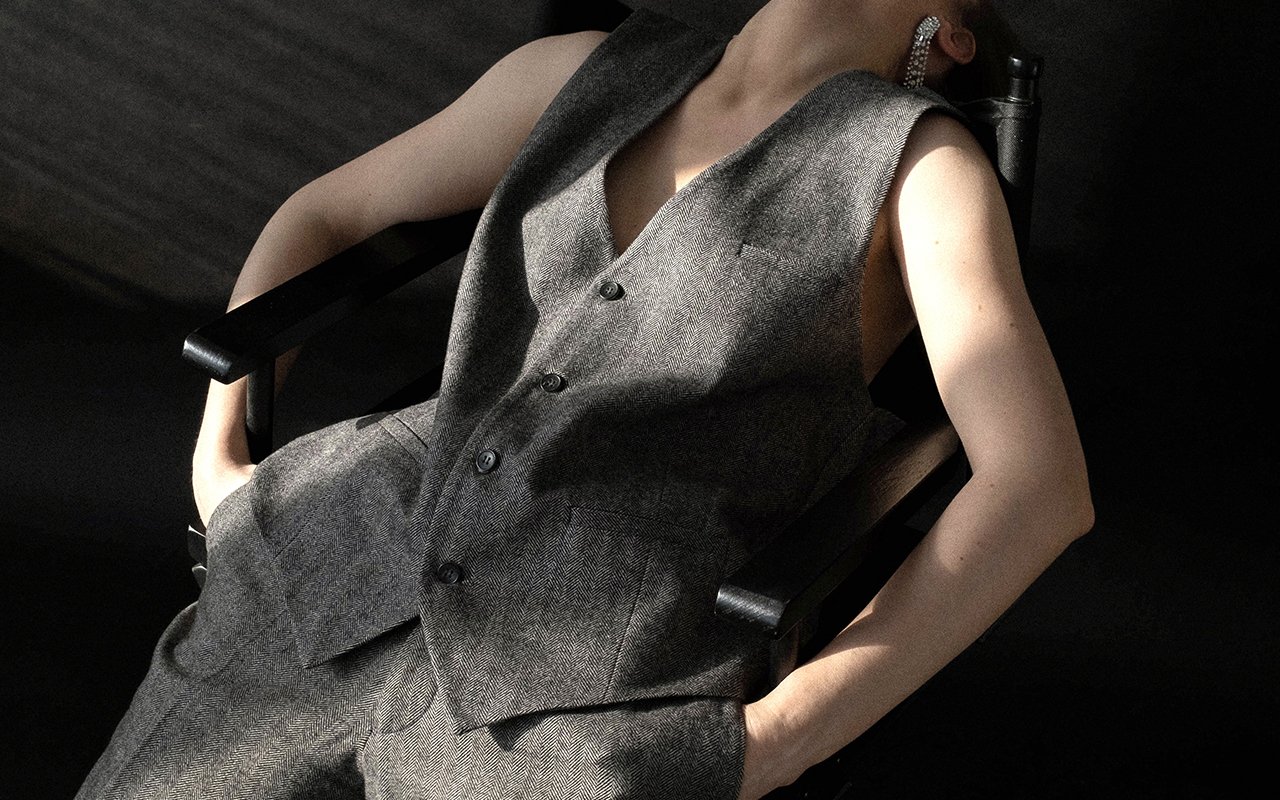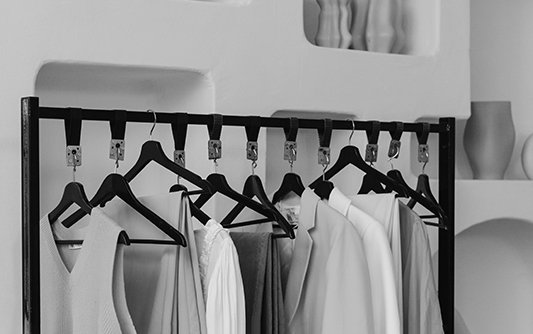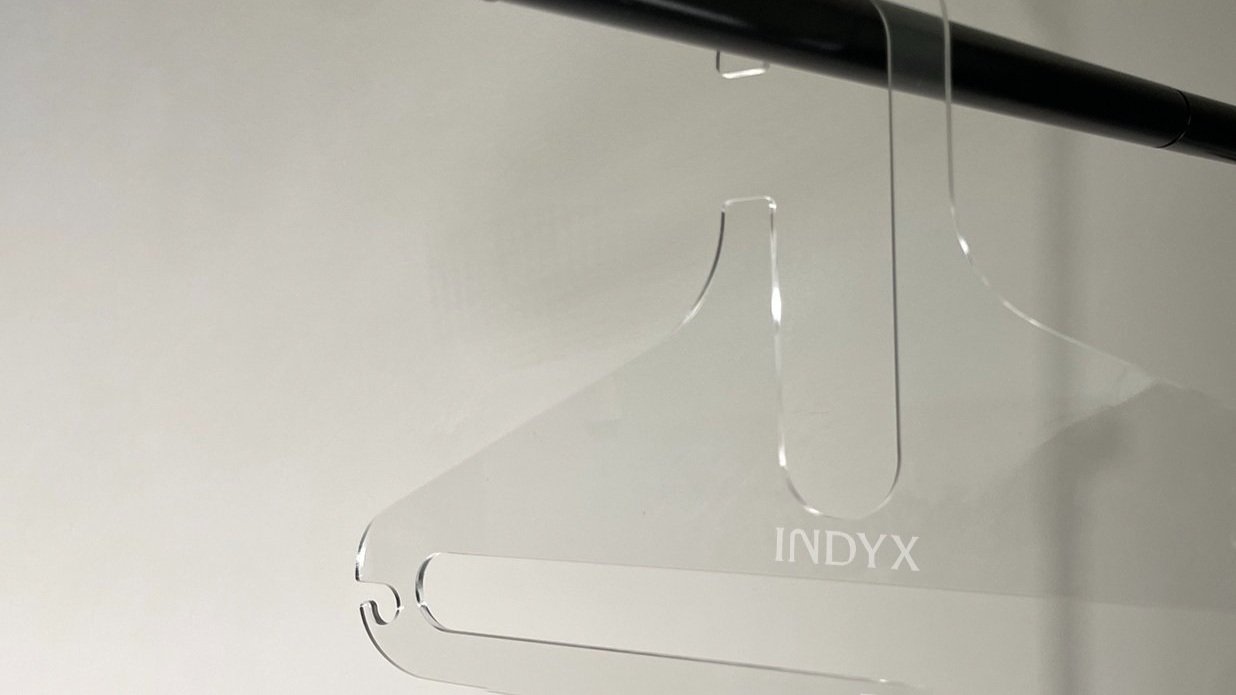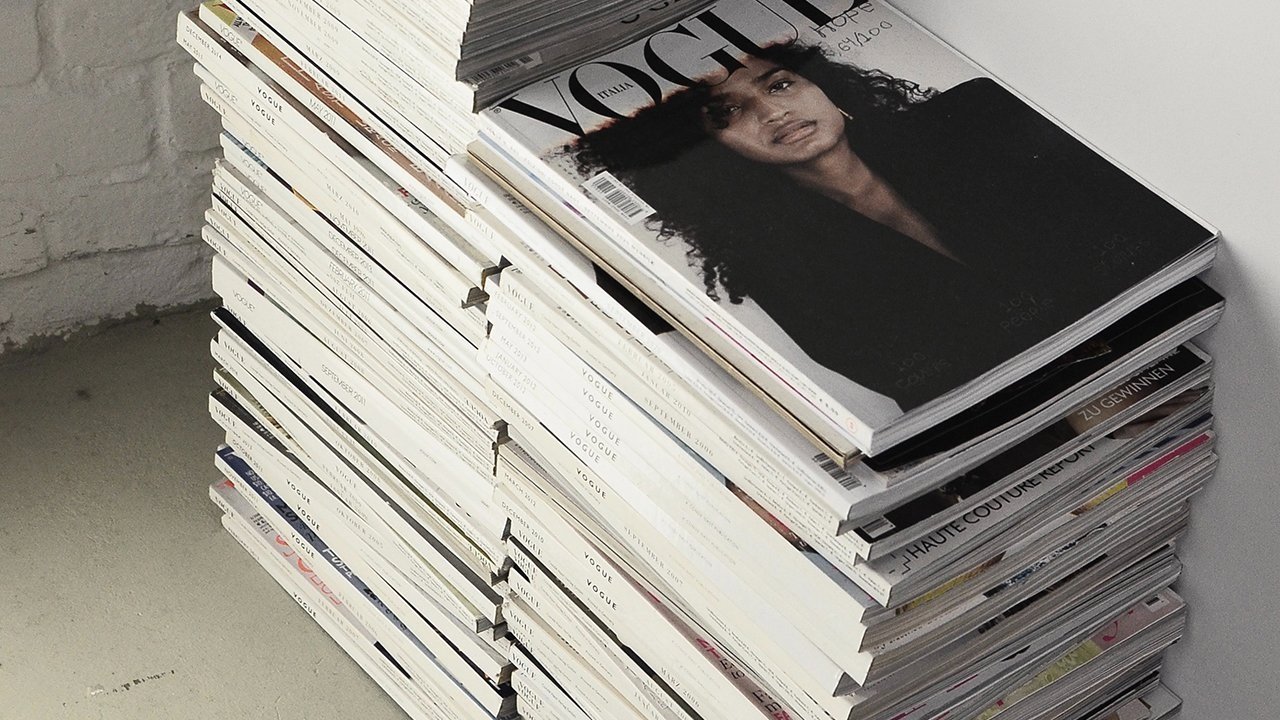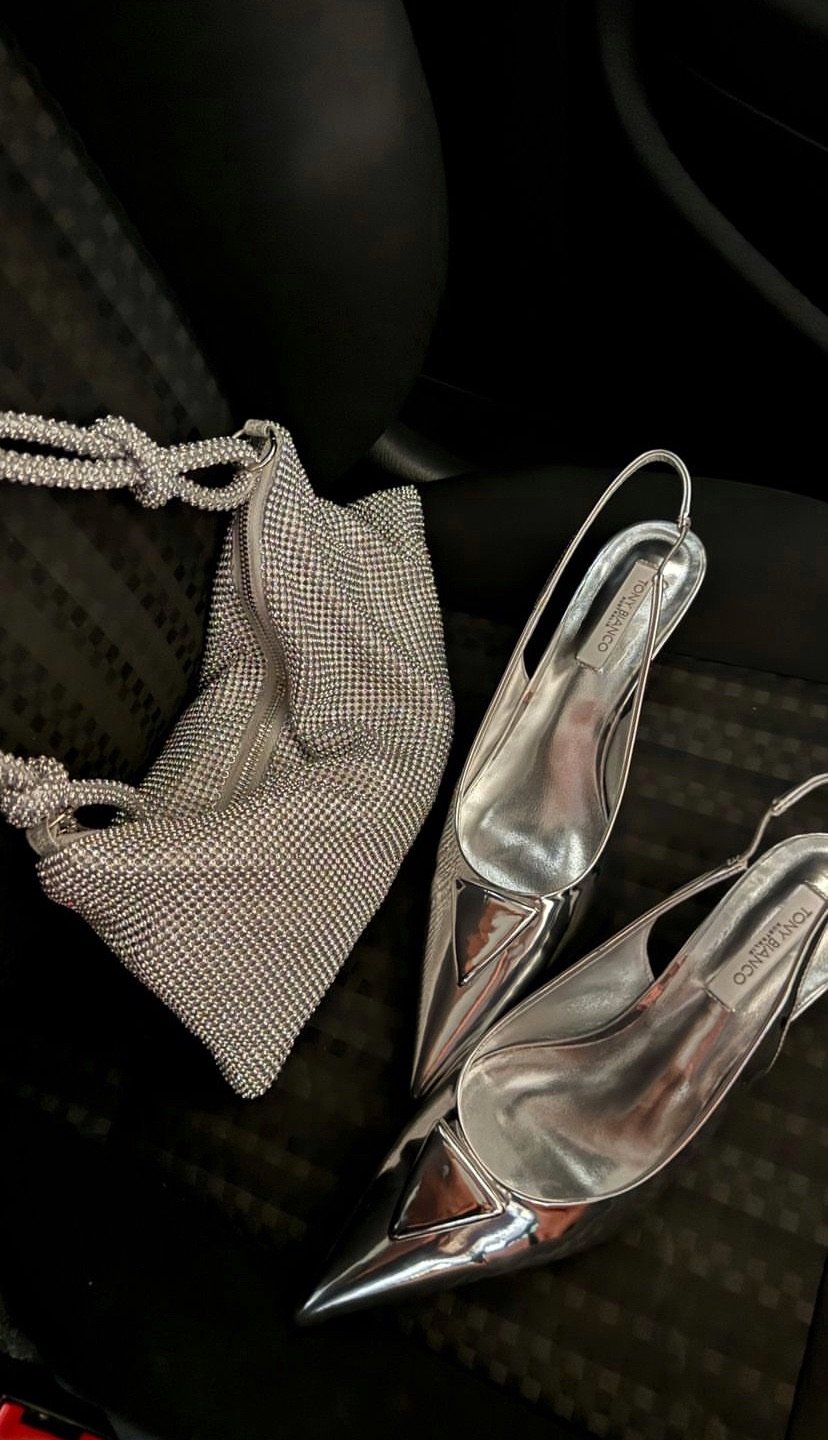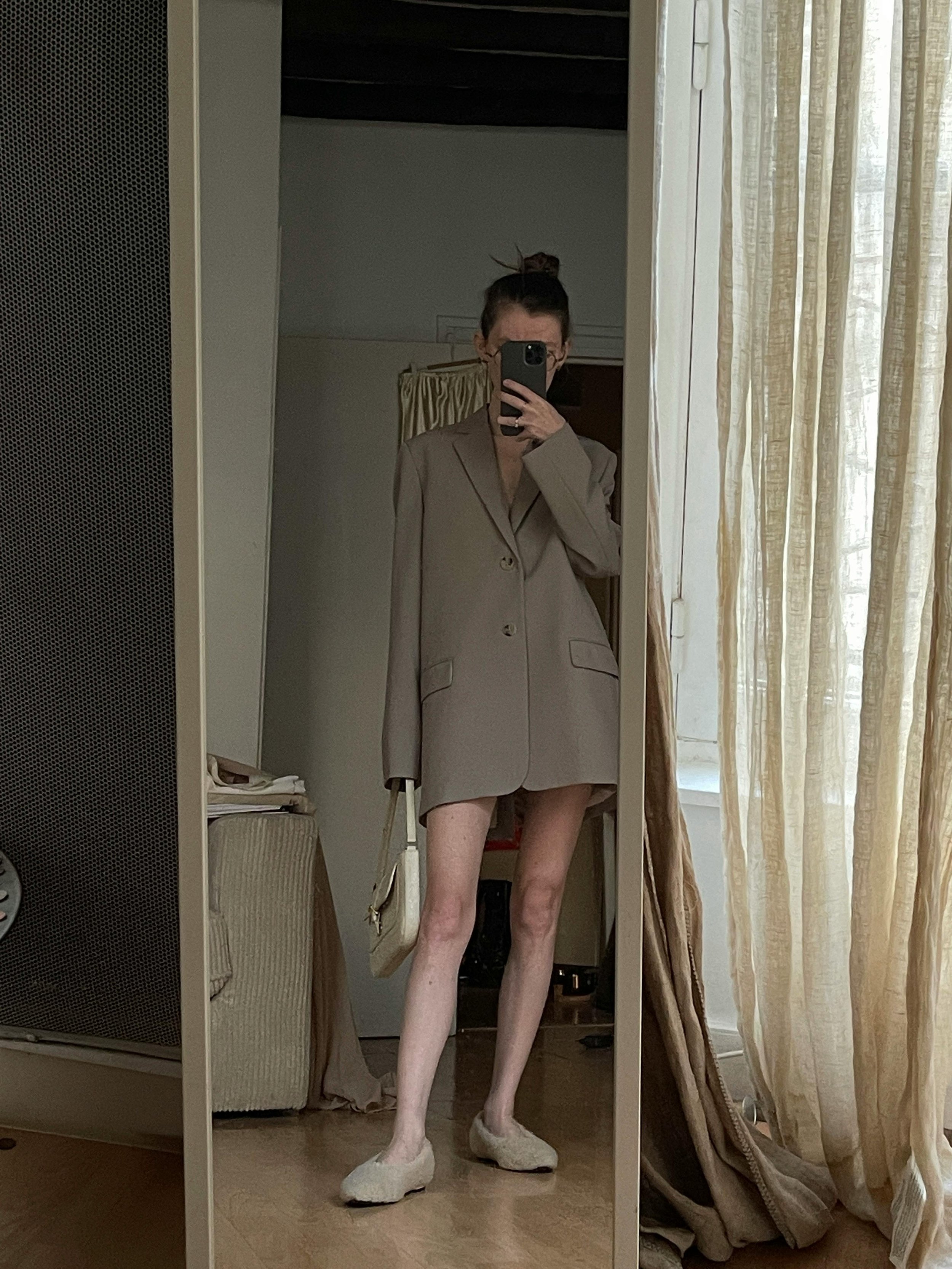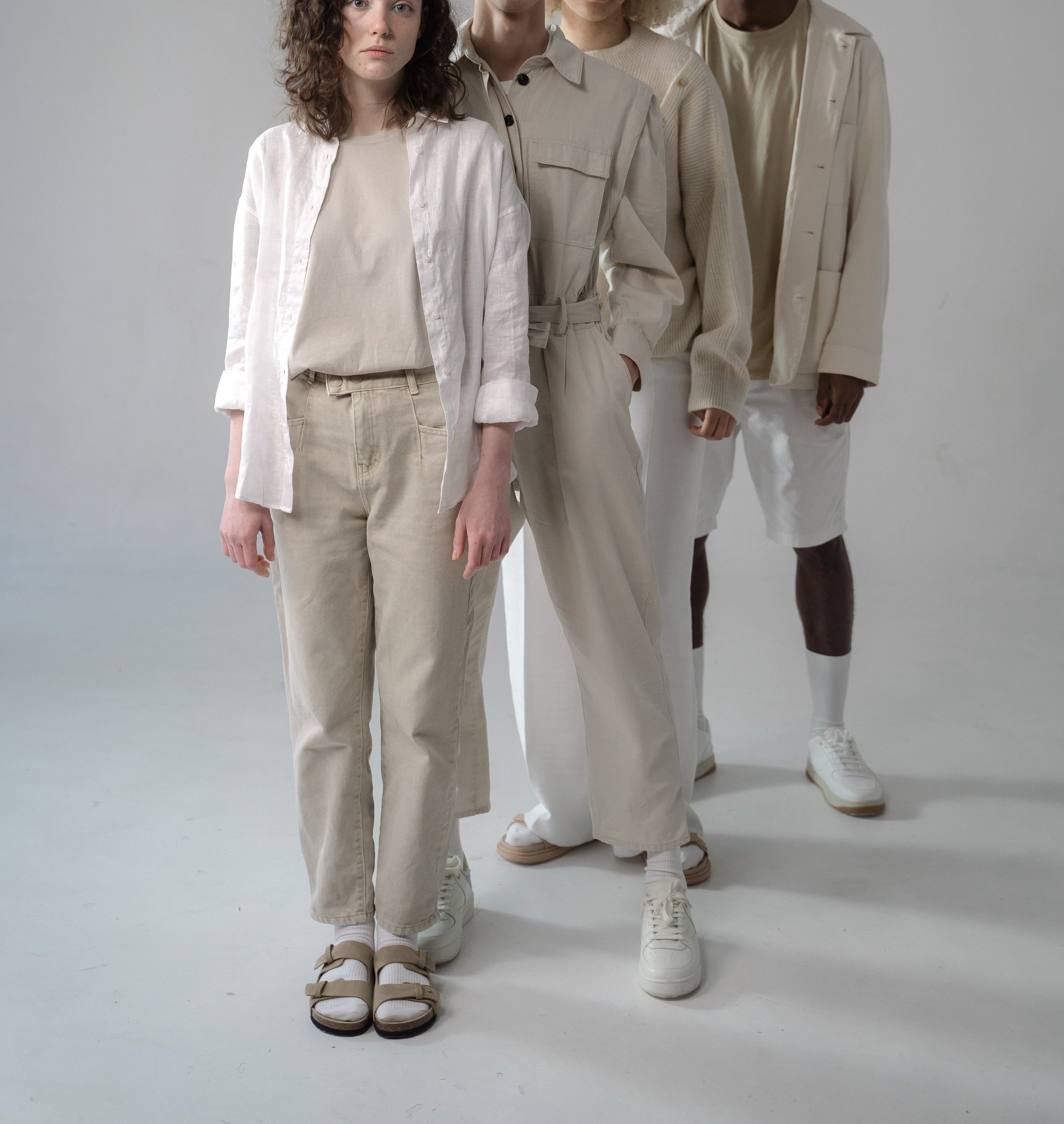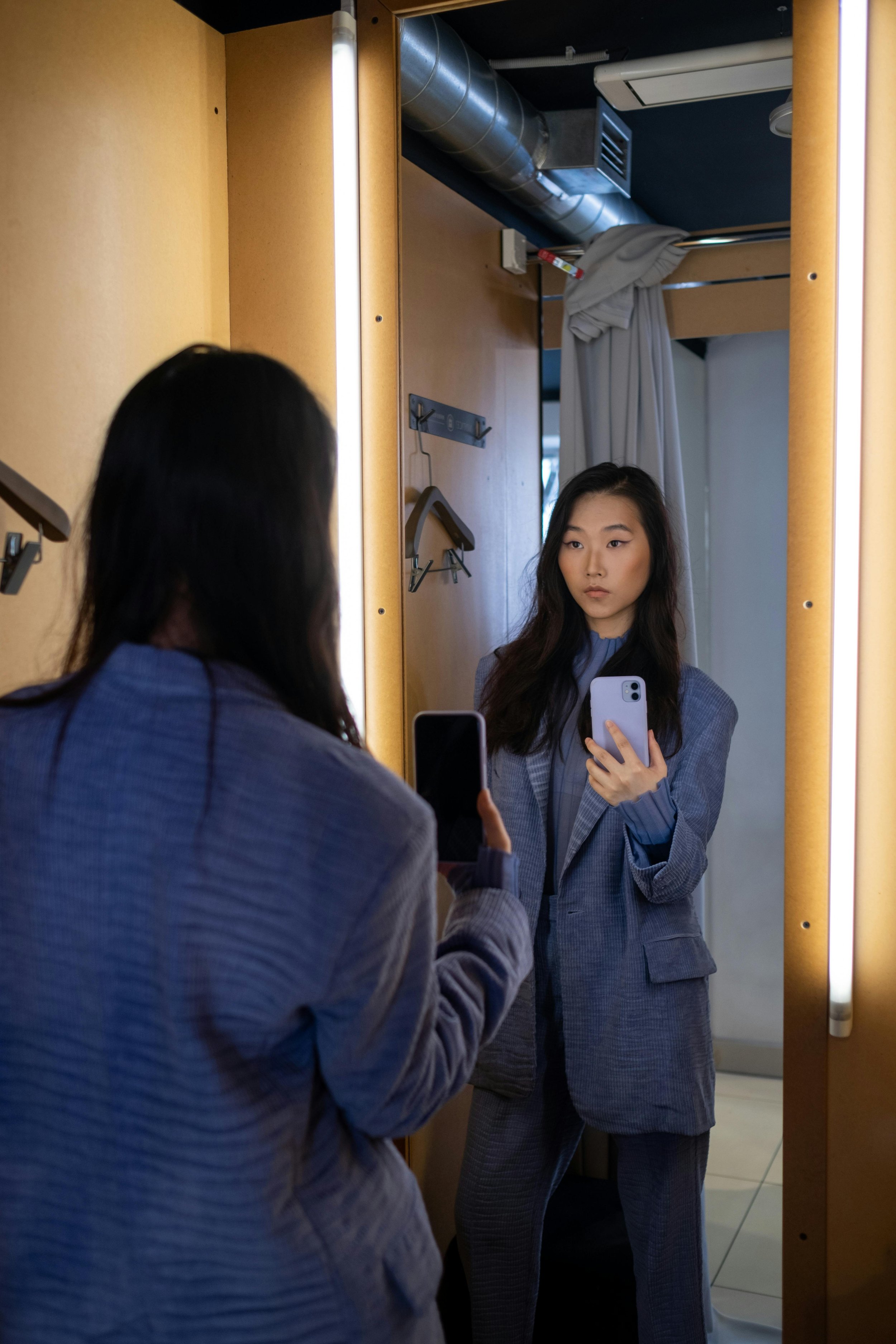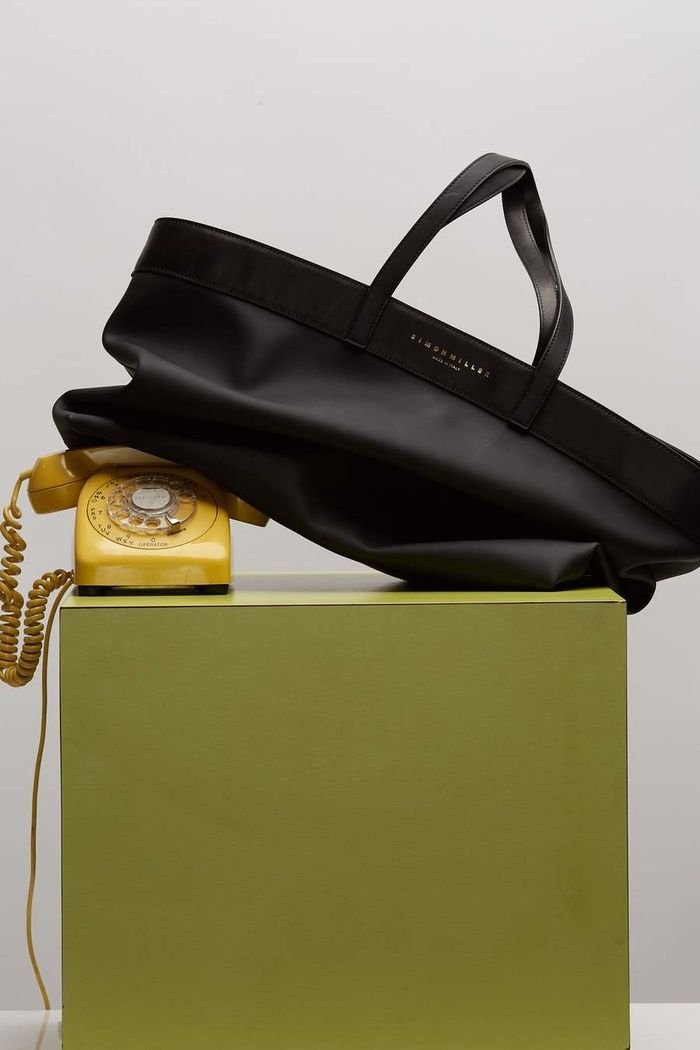The Best Wardrobe Apps
Without the help of the best wardrobe app, we’ve all stood in front of our closets feeling totally uninspired and struggling to find the right outfit. You’re running behind, frantically trying on different combinations to try and find the right one - and all too often it still feels like you come up short, starting the day on a negative note and with a mess to clean up in your closet.
And despite feeling like we have nothing to wear, there is so much in our closets that go unused. Most of us consistently wear only a fraction of what we own, and the average item is worn only 7 times before being discarded.
But what if there was another way? Imagine if you had an oh-so-scrollable digital wardrobe that helped you get dressed every morning - just like Cher in the iconic 90’s movie, “Clueless”! That dream is now a reality, and you can now have your very own Clueless wardrobe - or perhaps we should say, not-so-Clueless wardrobe! - with the help of one of the best digital wardrobe apps like Indyx.
In this article, we’ll break down how wardrobe apps work, how they can make your life easier, and compare options so that you can find the best wardrobe app for you.
What Is a Wardrobe App?
A wardrobe app helps you digitally organize your clothes. After you upload photos of your items, you can use it to track different attributes like the item’s cost or when you last wore it. You can also combine items into new outfit combinations to see how they look without having to make a mess of your closet. Many apps also offer simple analytics on your wardrobe data, and organizational features like packing lists to help you prepare for any upcoming trips.
Many digital wardrobe apps cover these basics of organizing and outfit planning, but the best ones do much more. A wardrobe app is infinitely more useful when it’s not just an isolated digital representation of your closet, but when it connects you and your wardrobe to relevant suggestions and additional services.
It’s great to be able to see your sweater on your phone, but wouldn’t it be even better if you also got advice on how to wear that sweater, suggestions on new items that would pair perfectly with that sweater, and were able to resell that sweater, all in one place? That is exactly the innovative vision of the best digital wardrobe apps.
What is the difference between a Wardrobe App and a Closet App?
These are just two words for the same thing! A “wardrobe app” and “closet app” are one and the same. Tomato-tomahto
At Indyx, we prefer to use the term “wardrobe app” because it’s about all about the things in your closet rather than the closet itself.
How Wardrobe Apps (or Closet Apps) Work
All digital wardrobe apps start with the same step: cataloging your existing wardrobe. After you download the app, you upload photos of your items and input a few details like size, brand, and category. Some apps include automatic background removal that makes these images much more visually appealing, especially if you are planning on using them to build outfits.
It can be a big job to get this done, and so some apps provide additional solutions to help make this process easier. Some scan your image using AI to tag the item’s color and category. Others provide a white-glove service for someone to come to your house and do all the hard work for you.
After you digitize your closet, the real fun can begin! Depending on the features of the wardrobe app you choose, you can start tracking what you wear, view wardrobe analytics, style outfits, get outfit suggestions and shopping recommendations, or resell your items.
An important and interesting thing to note is that there is a wide variety of business models among wardrobe apps. How they are each making money will directly influence which features each app is most focused on and which they most heavily push to users.
Pay-to-Use Model
This wardrobe app business model charges either a flat fee to download the app or a monthly subscription fee to access the core set of features.
The good thing about this model is that (in theory) they are incentivized simply to build features that people want to use. These wardrobe apps tend to have a more basic feature set, focused squarely around organizing your closet digitally and planning outfits. If you’re looking for something very straightforward with no frills, then a pay-to-use wardrobe app may be a good choice for you.
The downside with flat-fee apps is that you have to spend your hard-earned cash just to try them out. They also aren’t as financially invested in maintaining the platform or adding new features. After all, they already got your money! While subscription fatigue is real, subscription models do keep more “skin in the game” for developers to continue to improve the platform.
Affiliate Commission Model
Similar to influencers or many media outlets, these wardrobe apps make a commission on product sales. They will typically present shopping recommendations, and if you buy something, then they take a percentage of that sale from the retailer.
Naturally, these apps tend to really push shopping in their features. We think that one of the best things about wardrobe apps is that they can help you make better use of what you already have, so focusing heavily on shopping is a bit of a missed opportunity.
It’s nice to be able to use the app for free, but the incentives of a sales relationship totally shifts the dynamic. We’ve all experienced a sales associate in a store telling us how great something looks on us, but been left wondering if they *really* think that. It’s the same with these apps. You will always have to wonder if the outfit they’re recommending actually looks good, or if they’re just looking to make a sale.
Advertising Model
Similar to Facebook or Instagram, this model depends on showing users advertising for other products or services. However, expect advertising in wardrobe apps to be less sophisticated and much more annoying than ads on Instagram. These are often intrusive old-school pop-up ads without any kind of personalization or targeting.
Service Model
Wardrobe apps with a service model make money from selling add-on services like white-glove cataloging or personal styling. Typically, you can use all the core features of the app for free, but they charge for these extra human-powered services.
We really like this model, as it takes the best qualities from the pay-to-use and affiliate sales commission models while avoiding their pitfalls. Users can get access to basic features for free, while still being able to offer some more sophisticated wrap-around services. And because stylists under this model are being paid a fee for their time rather than depending on product sales, their recommendations are much more unbiased and trustworthy.
How Digital Wardrobe Apps Make Life Easier
At this point, you may be wondering to yourself: “But why would I want a digital wardrobe?”. There are a few reasons why a wardrobe app could be a game-changer for your day-to-day life, but sometimes it’s better to show than tell, and Clueless’s Cher Horowitz does it best:
We all know what it’s like to be running behind and frantically trying on different outfits trying to find just the right one. With a Clueless wardrobe app like Cher’s, you are able to plan outfits ahead of time so you’ll always have the perfect outfit ready to go, saving you time and energy. Even better, in 2025, this is possible all on your mobile phone rather than Cher’s clunky desktop computer, so you can organize and plan your outfits from anywhere!
Just like Cher’s Clueless version, many outfit planner apps will also offer outfit suggestions to help elevate your style. Many wardrobe apps rely on artificial intelligence (AI) to create these combinations - but if you’ve ever spoken to an Alexa or Google Home, you probably already have an idea about how “intelligent” AI still isn’t. When AI today struggles to understand explicit instructions, how can we expect it to master something as subjective as personal style?
And so even in 2025, the best wardrobe apps provide outfit suggestions from a real, human stylist. Unlike many other “styling” services that focus on shopping new, these suggestions are all out of your own closet, helping you get more style out of the things you already own.
Tracking what you are wearing (or, not…) can also help you identify patterns so you can shop smarter, reducing those ‘wardrobe regrets’ that you thought you’d wear all the time, but fail to live up to expectations. You can also use an outfit planner app to ‘try before you buy’, by uploading a photo of any item you’re considering and see for yourself how it fits in with your existing wardrobe. We all want to get use out of what we’re buying - it’s more sustainable, and it can certainly save you money - and the best wardrobe apps can help you do just that.
Learn more about how to edit your wardrobe, and the best thing to do with your unwanted items
However, few wardrobe apps have all of these features such that you can manage everything to do with your wardrobe all in one place. In the process of building Indyx, I’ve done extensive competitive research on all the existing wardrobe apps out there, and so am well-positioned to share the pros and cons of each to help you find the best wardrobe app for you.
1. Indyx
Summary:
Digitize unlimited items on your own with AI-powered background removal or hire an Indyx Archivist to catalog your wardrobe for you
Build unlimited outfits and plan packing lists or other collections
Add your outfits to a calendar to automatically track cost-per-wear
Upgrade to the Indyx Insider membership to unlock premium features, including an in-depth analytics dashboard, a customizable wardrobe display, and the ability for friends and other Indyx users to send you outfits right in the app
Get Lookbooks styled by a real stylist of your choice (using your real wardrobe!) starting at $150
Free to download, available on both iOS & Android
Indyx’s mission is to unlock the potential of what you already own, and that’s made possible with the app’s impressive set of integrated features. It’s the only platform that combines digital cataloging and human personal styling in one place.
Indyx is a free wardrobe app that makes it simple to digitize your closet with an intuitive interface and AI-powered background removal that keeps your digital wardrobe looking clean and organized. And if cataloging sounds like a chore, their unique service The Catalog can send a professional Archivist to your home to do the work for you (check the app for pricing and locations).
On the free plan, you get everything you need to manage your wardrobe digitally: unlimited items, unlimited outfits, and all the basics to stay organized. Plan outfits, track cost-per-wear, and create packing lists right away. For many, that’s more than enough.
For those who want to take things further, the Insider membership unlocks a whole new dimension of Indyx. Among other things, you’ll get a detailed analytics dashboard and a customizable wardrobe display, plus two of the most-loved features: the ability to log outfit selfies and get styled by others. Sharing your closet is free, but with Insider, you can receive full outfits built from your wardrobe—either from your friends or from Indyx’s community of creative, friendly users who love sending outfit ideas. It’s a fresh way to see your wardrobe through new eyes and spark ideas you’d never think of on your own…all without buying a single new thing.
If you’re feeling unsure about your style, Indyx also offers tools and services to help. Take the free in-app Style Quiz to articulate your aesthetic, dive into the free Style Workshop content series, or work 1:1 with a real stylist for personalized outfit ideas and shopping recommendations. The Lookbook service delivers 10 outfits styled entirely from your closet (with a few suggestions for additions, if requested!) and is Indyx’s most popular offering.
Looking ahead, Indyx has a larger vision to incorporate resale directly into the platform. Listing items on Poshmark or Depop can be a pain—but because your wardrobe is already digitized in Indyx, you’ll eventually be able to list items on their marketplace with just a few clicks. Genius.
Altogether, Indyx goes beyond other options to become one of the best wardrobe apps for outfit planning and personal style development. It’s the only app that’s solved the hurdle of closet digitization with professional cataloging, while also offering expert guidance (from stylists and friends!) on how to get the most out of what you already own.
Indyx is free and available on both the App Store and Google Play.
2. Whering
Summary:
Catalog your wardrobe with automatic background removal and assisted tagging or add items from Whering’s item database
Build unlimited outfits from your own wardrobe for free, use the “Dress Me” feature for randomized suggestions, or try Whering’s AI-generated outfits
Schedule outfits, curate lookbooks of items, and build packing lists
No option for professional styling
Free to download, available on both iOS & Android
Whering is a UK-based wardrobe app that delivers a good user experience for anyone looking for the basics of a digital wardrobe: visualizing your clothes and building outfits.
You build your digital wardrobe by uploading photos with automatic background removal, and the app scans your photo to automatically tag it with attributes like category and color. This can make the whole process feel a little magical, but can also be quite frustrating when Whering gets it wrong.
Once your wardrobe is digitized, there’s plenty you can do to organize it: create unlimited free outfits, schedule them in a calendar planner, or build packing lists and curated lookbooks. Whering also offers two ways to generate outfits automatically. The “Dress Me” feature produces randomized looks—fun in a shuffle-the-deck kind of way—while their newer AI-generated outfits attempt to suggest more intentional styling. The AI feature is a clever idea, but the results often feel a bit random and disconnected from your personal style, which can make it less useful for day-to-day getting dressed.
Whering is free to download on both iOS and Android.
Our opinion on Whering
Whering’s app feels slick at first glance, and they’ve built a solid digital wardrobe that’s great if your main goal is to upload your clothes and build outfits on your own. Beyond that, though, the vision feels a little unfocused.
There are plenty of features, but not all of them feel especially purposeful. The randomized “Dress Me” shuffle is fun in theory, but not much better than grabbing clothes at random from your closet. Their newer AI outfit generator is clever, but the suggestions often feel disjointed from your personal style, which can make it more novelty than an everyday tool.
To their credit, Whering offers all of these features for free. But that raises a bigger question: how is the business sustaining itself? If the product is free, chances are the user is the product. At some point, something’s got to give—and without clarity on what that is, it may come as a nasty surprise to users down the road.
3. Acloset
Catalog your wardrobe with the help of automatic background removal and assisted tagging
Keep track of cost-per-wear and other basic wardrobe analytics
Build, schedule, and track unlimited outfits
Receive daily AI-generated outfit recommendations based on the weather
View and comment on outfits created by other users
Shop and sell secondhand within the built-in marketplace
Free to download, available on both iOS and Android
Acloset is a Korean wardrobe app with the goal of helping people who have too many clothes yet nothing to wear using AI-powered technology. While the app is well loved by its global user base, the AI outfit recommendations the app is built around don’t always receive rave reviews.
Acloset is free to download, and when you upload pictures of your clothes the app will automatically remove the background and tag the items with basic attributes like category and color. However, users complain that the photo uploading process can be a bit glitchy and may require more than one attempt at times.
Like most wardrobe apps, you can style unlimited outfits, schedule them on a calendar to track wear, and create different “closets” like for your winter wardrobe or for a weekend in Napa. The app also provides some basic wardrobe analytics such as the distribution of your closet across categories, cost per wear, and wear frequency.
The standout feature of Acloset appears to be their AI-generated outfit recommendations, but be warned: it’s not super smart and users have pointed out the issues like some nonsensical outfit pairings and having the same items consistently restyled while ignoring other parts of their closet.
Acloset also encourages community through its social media-like outfit feed where you can follow other users or see trending user-generated outfits.
Finally, the app has a built-in marketplace of secondhand items, where users can quickly list items from their closet. However, listings are only listings. Meaning, ACloset only facilitates messaging between buyer and seller, and users responsible for negotiating amongst themselves payment and shipping methods on another platform.
Our opinion on Acloset
Acloset’s positive reviews speak for themselves: it is a well thought out app with some additional features that start to take real advantage of a digital wardrobe. As for its basic wardrobe functionalities - uploading clothes, building, scheduling and tracking outfits - Acloset is a very solid option.
But like every AI-powered wardrobe app, it doesn’t really cut it as a styling app. The AI just isn’t there yet to create outfits you actually want to wear with any dependability. Think of it like a fun toy, but not a real solution.
The app’s social platform is unique in its attempt to build community and allow users to share outfits and gain inspiration. It very much gives Polyvore (does anybody else remember Polyvore?). But however fun it may be, it’s ultimately just style inspiration similar to what you could find on any other social media platform.
We do give Acloset credit for being one of the very few apps with a built-in marketplace for preloved items. However, Acloset’s version comes with a good dose of risk and a bit of a headache. Who wants to figure out all the details of a transaction with a stranger you just met on the internet? From closing the deal, to organizing payment and arranging shipping, it’s all on you. Between the non-secured transactions and the apparent youthfulness of Alcloset’s user base, most of the items on the marketplace tend to be pretty low value - more thrift store than The RealReal.
And, between the preloved marketplace and the social feed which are both featured prominently and are both filled with, well…other people’s stuff…the app overall can start to feel a bit ‘junky’. If you are looking for a clean, zen digital space for your own closet then this may not be the right choice.
4. Stylebook
Summary:
Catalog your wardrobe with the help of a manual background removal tool
Build, schedule, and track unlimited outfits
Create packing lists and view basic wardrobe analytics
No option for professional styling help or direct connection to resale
$4.99 to download, available only on iOS
Stylebook is an OG option that is pretty bare-bones and won’t win any design awards, but does the job of being a basic wardrobe app for planning and organizing - and its loyal fanbase loves them for it.
Stylebook charges a one-time fee of $4.99 to download the app, but after that you will get lifetime access to its suite of features. Upload your photos, and you can use their background removal tool to create a clean wardrobe. It isn’t automatic, but it usually gets the job done after a bit of fussing.
You can style unlimited outfits, schedule and track wear, create packing lists, and view wardrobe analytics. Finally, the Style Shuffle feature allows you to select categories to shuffle together like a deck of cards to reveal new outfit ideas for inspiration.
Our opinion on Stylebook
Stylebook is a no-frills option if you just want some basic functionality to upload your closet, build outfits, and track wear, but there just isn’t too much beyond that. It’s good for organization, but doesn’t truly help you get any more style out of your closet or circulate any items you’re no longer using.
Stylebook is also limited by its business model. The app charges a one-time flat fee, which might feel appealing at first, but it leaves little incentive—or resources—for ongoing improvements. As a result, Stylebook has remained largely unchanged for years, with few updates or new features added.
5. Save Your Wardrobe
Summary:
Catalog your wardrobe with automatic background removal and assisted tagging
Build, schedule, and track unlimited outfits
Create packing lists and view basic wardrobe analytics
Schedule local services like repairs, alteration, and dry cleaning (currently only available in London)
No option for professional styling help or direct connection to resale
Free to download, available on both iOS & Android
Save Your Wardrobe is similar to Whering in that it has a clean, snappy interface and covers all the basics of a good wardrobe app for planning and organizing.
You build your digital wardrobe by uploading photos through their automatic background removal, and the app scans your photo to automatically tag it with attributes like the category and color. Again, this is great when it works, but even in 2023 simple AI like this leaves a lot to be desired and often makes mistakes.
Once you’ve built your digital wardrobe, you can accomplish all the same basic functions like planning outfits, scheduling them in a calendar, and building curated lists of items. One thing to note about the Save Your Wardrobe outfit builder is that it basically creates a mini-list of the items in the outfit rather than generating a true outfit board like most of the other best wardrobe apps. This gets the job done in terms of organizing and tracking, but doesn’t quite scratch the same visual itch if that is important to you.
Similar to Whering, Save Your Wardrobe also attempts to connect you to local services like repair, alterations, and dry cleaners. It is more than just a directory, taking you through a matchmaking flow to learn about the type of service you’re looking for and then providing you with their best match provider and a cost estimate. However, these services are again only currently available in London.
Our opinion on Save Your Wardrobe
Our view on Save Your Wardrobe is similar to Whering: the app is clean, fast, and easy to use but really only has basic self-serve organizing and tracking functionality. It does not have a larger vision to truly support improving your style or supporting end-of-life circularity for items you no longer need.
The matchmaking with local care & repair services is an interesting addition, as this is one area where it does appear they are building out a greater ecosystem to get more life from your wardrobe. However, this is going to be difficult to scale - it’s great if you live in London, but for the foreseeable future it’s not much help if you’re located well, anywhere else.
6. Cladwell
Summary:
Get started quickly by using a pre-loaded ‘capsule wardrobe’ as a stand-in, and replace with photos of your actual wardrobe over time
For free, you can: build, schedule and track one outfit a day. You’ll also get one free algorithmically-generated outfit recommendation per day and 5 messages per month to “Ask Cladwell” (powered by ChatGPT)
Upgrade to $7.99 a month to get unlimited access to outfits, view wardrobe analytics, organize clothes into ‘mini-capsules’, and 50 messages per month to “Ask Cladwell” (powered by ChatGPT)
Upgrade to $49 a month to add access to a human stylist via text or email
Spotty background removal, and no connection to resale
Free to download, available on both iOS & Android
The Cladwell app has gone all-in on AI, using a ChatGPT plug-in to attempt to emulate human styling services. It is also quite centered around the idea of having a “capsule wardrobe” (likely, as a way to help focus the algorithm…) so if that is an appealing concept for you, this may be a good choice.
Unlike every other wardrobe app, Cladwell doesn’t have you start with cataloging your own wardrobe. The Cladwell app heavily encourages you to select from one of over thirty pre-built “capsule wardrobes”, and your Cladwell wardrobe is automatically populated with these generic items. You can then replace similar items with those from your actual wardrobe by uploading your own photos. Cladwell *claims* that they have automatic background removal, but we struggled to get it to work properly.
Once you have created “your wardrobe”, you can build, schedule and track one outfit a day for free, and receive one algorithmically suggested outfit from Cladwell based on the weather.
If you’re a big fan of Siri, you’ll also like Cladwell’s most recent feature: Ask Cladwell. You can ask the ChatGPT plug-in questions like: “where can I buy the best linen clothes?” or “What should I wear to a date?”. It’s a cool idea in theory, but there’s a bit of an execution issue (more on that later). You can send 5 messages a month with Cladwell’s free plan.
For access to all app features, such as unlimited outfit planning, mini-capsules and more AI generated outfits, you must upgrade to a $7.99 monthly subscription. If you would like a more human touch, you can pay $49 per month to reach a stylist by email or text.
Our opinion on Cladwell
Cladwell is placing its bet on the benefits of AI-generated outfit styling, which…we’re just not sure is much of a benefit. At least, not yet.
The problem as we see it is that style is more art than science - it’s very subjective, and very personal. And so, if we are often struggling to speak intelligently with Siri about the weather, is it realistic to believe that a machine can generate truly good outfits?
While ChatGPT has shocked the world with its early capabilities, it is also often wildly inaccurate - in all areas! ChatGPT was not trained visually on well-styled outfits, but rather on the collective group-think of generalized style advice from the internet. And, there is a lot of truly useless advice out there! Add to this the fact that it is trying to translate that advice onto your items given only a few basic tags (think: category and color) and…the outfit suggestions can leave a lot to be desired.
So while this technology can “style” many people for free, in the end it doesn’t really style anyone. There is no one-size-fits-all capsule wardrobe, nor is there any one-size-fits-all style recommendation.
Several users corroborate these shortcomings in their App Store reviews, complaining that most outfits don’t quite go together. Additionally, users have noted that the app seems to completely ignore some of the clothes in their wardrobe which - in our opinion - defeats the purpose of having a digital wardrobe to maximize what you own.
7. Pureple
Summary:
Catalog your wardrobe with the help of a manual background removal tool, and ability to add items directly from the web or their database of items
Build, schedule, and track unlimited outfits
Create packing lists and view basic wardrobe analytics
Open your digital wardrobe to be styled for you by other Pureple users
No option for professional styling help or direct connection to resale
Users complain of bugs and frequent pop-up ads
Free to download, available on both iOS and Android
Pureple is another basic wardrobe app with similar functionality to Stylebook but without the $4.99 download fee. It allows you to upload photos of your closet and build outfits, but app bugs and frequent pop-up ads can make for a frustrating experience.
Pureple is free to download, and you can upload your photos using their background eraser, but users complain that - in addition to being manual rather than automatic - this feature is quite buggy and can take a few tries to get right.
Similar to Stylebook, you can style unlimited outfits, schedule and track wear, create packing lists, and view wardrobe analytics. The app also provides some algorithmic outfit suggestions. Despite offering a “thumbs up” and “thumbs down” option to rate the outfits, users are doubtful that this feedback influences future suggestions and suspect that outfits are simply randomly generated.
One interesting point of differentiation that Pureple offers is the ability to open your closet for others on the app to style outfits for you - but this is obviously hit or miss depending on who chooses to style you, and there is no ability to give these friendly strangers any guidance or feedback.
While Pureple is a free wardrobe app, you ‘pay’ for the service through viewing pop-up ads. Users complain that these pop-ups are annoying and incessant, which is not the experience you want when just trying to get dressed in the morning.
Our opinion on Pureple
Pureple offers all the same basic features as Stylebook, and shares the same criticism from us in terms of lack of integrated wardrobe support. The difference is that you essentially have to pick your poison: spend $4.99 or be inundated with pop-up ads in perpetuity. We would rather skip a Starbucks once than deal with that daily annoyance.
Devon is a co-founder of Indyx and currently leads Growth for the company from San Francisco. She enjoys admiring other people’s gardens and sleeping in with her French Bulldog, Reggie.

























